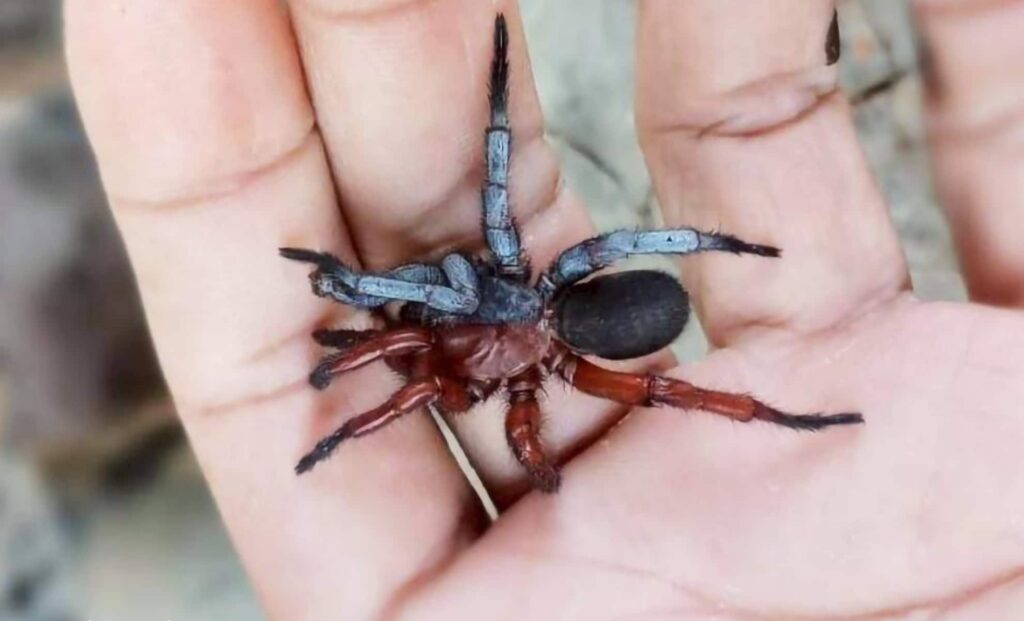The discovery, described in the journal Zootaxa, is the first ever recorded instance of a gynandromorph in the spider family Bemmeridae, and only the third known case in the entire group of mygalomorphs, a lineage distantly related to tarantulas. The specimen was unearthed in a disturbed forest area near Nong Rong, bordering farmland and a roadway, by local naturalists digging for ambush predators.
The research team, led by Chawakorn Kunsete of Chulalongkorn University, initially mistook the animal for a typical female spider. But photos posted on Facebook by collaborator Surin Limrudee revealed a strikingly symmetrical color divide: one side with the larger fangs and orange hue of a female, the other side smaller, whiter, and with male leg structures. “Upon contacting him, I discerned that the specimen was not only a gynandromorph but also morphologically distinct from any previously described species,” Kunsete told Forbes.
A Body Divided: The Mechanics of Gynandromorphism
Gynandromorphism is a developmental anomaly where an organism displays both male and female characteristics in different parts of the body. In the case of Damarchus inazuma, the left side bears traits associated with female spiders—including larger chelicerae and female reproductive organs called spermathecae—while the right side exhibits male anatomical features.
This split is believed to arise during early embryonic development, when sex chromosomes become unevenly distributed across dividing cells. According to ZME Science, the condition has been previously documented in birds, butterflies, and crustaceans, but remains extraordinarily rare in spiders—especially in burrowing species like this one. Before this discovery, only two such examples were known among tarantulas.
The researchers noted that the specimen showed no male reproductive organs, suggesting it would be unable to reproduce naturally. Still, its partial female biology indicates some degree of reproductive capability may be present, at least in theory.

Wishbone Spiders With a Flair for Drama
Damarchus inazuma belongs to the mygalomorph group of burrowing spiders, known colloquially as wishbone spiders for the shape of their silk-lined burrows. These spiders live underground, constructing tunnels from which they ambush prey. The species was identified through multiple field collections, revealing consistent differences between males and females: females reach about an inch in length and display vivid orange coloring, while males are smaller and ghostly grey.


When disturbed, the spiders exhibit aggressive behavior, frequently baring their fangs and producing droplets at the fang tips. Kunsete, speaking to Forbes, suggested this could point to a venomous defense mechanism—though likely only effective against small insects. The males were also observed with a mysterious white coating, which the team speculates could serve as camouflage or offer some protective function, though its purpose remains unclear.


The discovery site itself, located in a transitional zone between forest and agricultural land, may hold clues about environmental triggers. According to the authors, stressors such as parasites or habitat disruption could influence sex determination during development—though no definitive cause has been identified in this case.
A Name Pulled From Anime—and a Deeper Biological Mystery
The spider’s name, inazuma, was inspired by a character from the anime One Piece who can switch between male and female appearances. The researchers explained that the name reflects both the spider’s striking visual split and the fluidity of its biology. “The Inazuma style is characterized by bilateral asymmetry, presenting distinct coloration with orange on the left side and white on the right side,” the study reads.
Gynandromorphy is estimated to occur in roughly one out of every 17,000 spiders in some true spider species, but is believed to be far rarer among burrowing varieties. This makes D. inazuma a biological outlier and a valuable case study for researchers interested in sex differentiation and evolutionary biology.
“What surprised me most was that this was not only the first record of a gynandromorph in the Bemmeridae family, but also a new species from Thailand,” Kunsete said, expressing gratitude for the collaboration that made the discovery possible.

